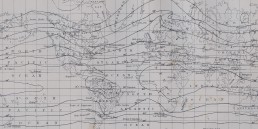Dealing with Data
The amount of data for maps available today is mindboggling. As you acquire data for your mapping project it is wise to keep the following ideas in mind:
- Garbage in equals garbage out. If your data is not correct and you can’t make it better, do not use it.
- Check your coordinate system. As you compile data, you will need to match geographic references.
- Prioritize for generalization and scale. Get data that matches the level of detail required for the project.
Existing and proposed depicted on your map trails should include:
- Trailheads and facilities
- Important intersections
- Hazards/obstructions (fences, water crossings, hike-a-bike sections)
- Beginning and end of trail sections
Base map layers should depict at least these attributes:
- Choose between elevation lines or shaded-relief topography
- Bodies of water
- Area streets
- Roads, highways, landmarks
- Boundaries (public/private lands)
Map labels will highlight at least this information:
- Trailheads
- Highway exits
- Trail segments
- Trail segment mileage
- Roads that intersect the trail or are used for access
- Towns, cities and other communities
You might also considering adding these elements of supporting data to your map — these layers of information are optional, but highly recommended:
- Background and history of the trails
- Elevation profiles for trails
- Text trail descriptions — perhaps 100-300 words each
- Logos for partner organizations
- Special seasonal considerations — wildlife closures, frequent storms
- Climate charts – temperature and precipitation
- Photos (include copyright marks and credits)

